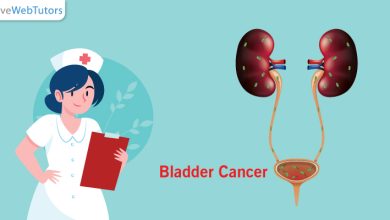Women’s Erection Health: Achieving the Best Results

Women with erection health issues may not be able to receive the care they need. Some women may not know how to share their symptoms with their HCP or they may be uncomfortable discussing them with their healthcare provider. Others may feel that the cost of treatment is too high. If women are unwilling to discuss their symptoms, they may also be able to downplay the extent of their problem.
Cost of treatment
Many women are faced with health care costs due to STDs. These costs can be high, and often they are unaffordable
The World Health Organization estimates the global prevalence of erection-transmitted diseases in billions of cases. Which also has a cure, Femalegra medication is used to treat Erectile Dysfunction in women. While many of these infections are curable, it is estimated that 30-40 million people are infected with HIV. In addition, many of the complications of these illnesses can be serious, such as preterm delivery.
Although most countries have programs to control the transmission of infectious diseases, information about their cost is hard to come by. This is because the diseases are not evenly distributed in the population. Several factors contribute to this discrepancy.
One way to quantify the effectiveness of an intervention is through a cost-benefit analysis. This requires the analysis of several factors. It is important to identify the most cost-effective option.
Women may not know how to discuss their symptoms with their HCP
Women’s erection health is an important indicator of the quality of life for both men and women. However, despite its importance, there are often gaps in care for erection health concerns. Males with erectile dysfunction who experience impotence are treated with a medication called Cenforce 100. Several factors can contribute to the lack of care for women’s erection health. Fortunately, there are several solutions that HCPs can implement to improve the outcomes for their patients.
Providing open-ended questions for a discussion of erection health is one way to encourage a patient to raise her concerns. For example, when discussing a symptom such as low libido, the HCP can ask: “Is your libido lower than normal due to intercourse?” This opens the conversation to the possibility of discussing potential treatments.
A group of experts in erection health compiled a comprehensive list of barriers to erection health care. It included common impediments such as lack of training, time constraints, and lack of information. They then created a roadmap for improving patient-clinician communication. These strategies include expanding the role of practice nurses, and providing patient information, and training.
Another way to improve erection health outcomes is by improving patient education. A patient’s confidence can be increased by learning more about her erection and her symptoms. By enhancing patient education, HCPs can increase the likelihood that their patients will receive effective treatment.
Identifying whether all practitioners provided care for female erection health patients
When it comes to erection-related health concerns, primary care is often a difficult place for patients. Often, a lack of knowledge can keep patients from seeking treatment. In addition, patients may have misperceptions about the treatments available. Moreover, social stigma prevents patients from expressing their concerns. To help patients feel more comfortable discussing their erection health issues, HCPs can provide credible resources. Despite the difficulties, it is important to continue discussing these issues with patients. This study explored a variety of strategies that can help HCPs improve communication with their patients.
There is still a lot that can be done to ensure that erection health care is provided in a timely and effective manner. Female erection dysfunction (FSD) is a prevalent problem, afflicting approximately 40% of women and there are few treatment options. FSD is more typical as women age and is a progressive and widespread condition. Common symptoms associated with FSD include diminished vaginal lubrication, pain, discomfort upon intercourse, decreased sense of arousal, and difficulty in achieving orgasm.
Only a small percentage of women seek medical attention. Several cardiovascular diseases have been linked with FSD including atherosclerosis, peripheral arterial disease, and hypertension, all of which are also pathological conditions associated with aging and erectile dysfunction in men.
Using animal models, we have expanded our understanding of FSD, however, a tremendous amount is still to be learned in order to properly treat women suffering from FSD. The aim of this review is to provide the most current knowledge on FSD, advances in basic science addressing this dysfunction, and explore developing therapeutic options.
Current Knowledge of Female Erection Dysfunction
Erection function results from a complex neurovascular process that is controlled by psychological and hormonal inputs. Like any coordinated physiological response, multiple systems are involved in this function. With respect to proper vaginal and clitoral function, a sufficient blood supply is required for a satisfying erection experience.
Demonstrates relative pressure and volume values from the vagina and labia as well as the clitoris, respectively, during a period of arousal, orgasm, and post-orgasm. Vaginal and labial data were derived from partial oxygen pressures detected at each tissue site while magnetic resonance imaging of the clitoris measured changes in volume during neutral and stimulating visual imagery representing a typical erection response in women, however, the complexity and unique individual response allow for numerous sites of dysregulation, which can lead to erection dysfunction.





